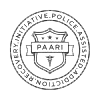
By LYLE R. FRIED, CAP, ICADC, CHC In Opioid Addiction
Posted May 10, 2018
Prescription medications like Percocet, Vicodin, and OxyContin can provide short-term relief for pain. At the same time, these medications are highly addictive—and dangerous.
The Danger of Prescription Painkillers
Sometimes called “the new gateway drug,” prescription opioids can overstimulate the brain’s reward centers while simultaneously inhibiting the part of the brain that reacts to potential harm. As these overstimulated reward centers start shutting down, people feel anxious, depressed, and joyless. As a result, they continue using to avoid these feelings of hollowness or misery.
When prescription painkillers are no longer enough, some users turn to a more powerful opioid: heroin. According to the National Institute on Drug Abuse(NIDA), a study of young injection drug users found that 86 percent had used opioid painkillers nonmedically prior to using heroin. These painkillers were typically obtained from friends, family members, or a personal prescription.
This sharply contrasts with the opioid users of the 1960s. In the 60s, more than 80 percent of people entering treatment for opioid addiction started with heroin. Among those who began abusing opioids in the 2000s, 75 percent reported that their first opioid was a prescription drug.
Even when prescription drugs don’t lead to harder drug use, the results can still be deadly. Per the Centers for Disease Control and Prevention(CDC), as many as 1 in 4 patients receiving long-term opioid treatment become addicted, even when taking medication exactly as prescribed. And every day, more than 40 Americans die from prescription drug overdose.
So what can done be done to safeguard against addiction to painkillers? Let’s take a look.
What Doctors Can Do
Doctors should prescribe the lowest possible effective dosage of opioids when opioids are necessary, and the CDC states that “non-opioid therapy is preferred for chronic pain outside of active cancer, palliative, and end-of-life care.”
Physicians must also be alert, taking notice of any rapid increases in medication needed or of excessive refill requests. They also need to watch for “doctor shopping” (moving frequently from provider to provider in order to obtain additional prescriptions).
What Pharmacists Can Do
Like doctors, pharmacists should guard against “doctor shopping.” In many cases, this is made possible by Prescription Drug Monitoring Programs (PDMPs), state-run databases used to track the prescribing of controlled prescription drugs to patients.
Pharmacists should also carefully give instructions to patients and look closely for prescription falsifications or alterations.
What You Can Do
Of course, you can’t control the actions of your physicians or pharmacists. But if you find yourself needing prescription painkillers, there are some steps you can take to mitigate the risk of addiction. Start by following the five tips below.
-
Be informed.
Learn about prescription opioids and understand the risks before starting opioid treatment. Ask your doctor to prescribe the lowest possible dose and to start you on immediate-release opioids rather than extended-release/long-acting opioids.
Immediate-release opioids are faster acting and have a shorter duration of pain-relieving action, making them less addictive than extended-release pills. Talk to your doctor about the benefits and harms of this form of treatment, then make the most informed decision possible.
-
Have realistic expectations.
Understand that the pain-relieving effects of opioids decreases over time. Ultimately, the medications will only reduce your pain by a maximum of 20 to 30 percent. This is one reason that many individuals increase their dosage and become addicted.
Collaborate with your doctor to set realistic treatment goals and make a plan for what you’ll do if these goals are not met.
-
Follow directions exactly.
Take your prescribed painkillers exactly as instructed by your doctor, described on the label, or explained by your pharmacist.
You may think “just one more” isn’t a problem when you’re in serious pain, but understand that this is a slippery slope.
Never stop or change your dosing regimen without first consulting your doctor.
-
Explore alternatives.
Before turning to opioid treatment, consider non-opioid alternatives like acetaminophen, ibuprofen, exercise therapy, weight loss, behavioral treatment, or interventional treatment like injections.
Try some of these alternatives first to see if you can get sufficient relief without the use of highly addictive opioids.
-
Practice proper use and storage.
Be aware of potential interactions with alcohol and other drugs. Never give your medication to anyone else, and never ask others to use their medication.
Communicate frequently with your doctor about how well the prescription is working and if you have any concerns. Be sure to store your medication safely per the directions on the label.
Summary
Prescription painkillers certainly offer some benefits, but it’s vital to be informed about the risks as well. Have realistic expectations and explore alternatives before beginning opioid treatment. Once an opioid has been prescribed, be sure to store and use the prescription properly, following your doctor’s instructions exactly.
By taking these precautions, you can safeguard against addiction to painkillers and safely treat short-term pain.
If you think you already have a problem you can speak to one of our addiction specialists by calling 1-888-249-2590 or click here.













